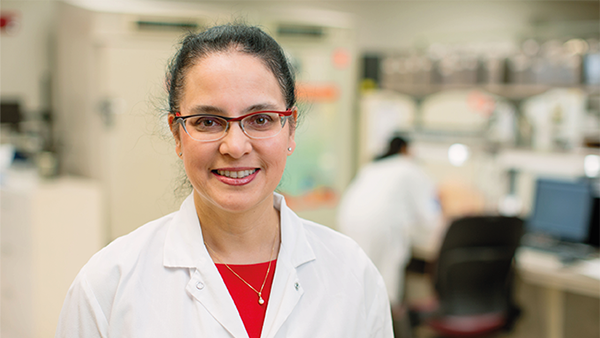On a Journey of Deep Discovery
AI-guided discovery of antibiotics holds promise over traditional screening methods – and just found a new antibiotic against Acinetobacter baumannii
Acinetobacter baumannii has gained significant attention in recent years as the most challenging Gram-negative pathogen – topping the World Health Organization’s list as a critical priority pathogen. It is particularly difficult to treat thanks to its ability to develop resistance to multiple antibiotics, and developing new antibiotics against the bacteria can prove difficult. Could deep learning-guided discovery do the job?
Realizing that traditional screening methods just wouldn’t cut it, researchers of a recent study published in Nature used machine learning to discover a new bacterial molecule against A. baumannii (1). I was keen to dig a little deeper and reached out to Jonathan Stokes, Assistant Professor at McMaster University and senior author on the study, who gave us further insight into the research and its potential implications.
How was your deep learning model trained to predict structurally new classes of antibacterial molecules against Acinetobacter baumannii?
We gathered data in the laboratory, where we tested ~7,500 molecules against A. baumannii to see which chemicals would inhibit the growth of Acinetobacter in a dish. We sorted those chemicals into two piles – molecules that were growth inhibitory and those that were not – and trained a model to learn the chemical features associated with antibacterial activity and the chemical features that were not. Once the model was trained, we could then perform predictions of new chemicals that were likely to be antibacterial against A. baumannii.
What specific characteristics were you looking for in the new antibiotic?
After performing predictions, we collected a set of molecules to experimentally test against A. baumannii in the lab. The most potent compound at inhibiting the growth of A. baumannii was RS-102895, which we called abaucin. At this stage, we were only looking for molecules that had reasonably potent growth inhibitory activity in a dish to use as a starting point for further wet lab studies.
How does abaucin differ from existing antibiotics against A. baumannii?
Abaucin is really interesting because, based on our wet lab data, it appears to inhibit a biological process called lipoprotein trafficking in A. baumannii. This is uncommon amongst clinically used antibacterial agents. Moreover, abaucin seems to have more selective activity against A. baumannii and doesn’t work very well against other bacterial pathogens.
Why is machine learning advantageous over traditional screening methods in this application?
A. baumannii can be resistant to almost all current antibiotics, so it’s necessary that we look at brand new structures to find new efficacious antibiotics. This means we have to look at pretty broad swaths of chemical space to find those regions that have the antibacterial activity we desire against A. baumannii. When trained and applied appropriately, AI methods can help us search these large regions of chemical space more rapidly than we can in the laboratory.
Given that Acinetobacter are known to rapidly acquire multiple resistance genes, how confident are you that abaucin can remain effective in the long term?
Every antibiotic we discover will encounter the resistance problem – it’s not a matter of if, but when. It’s interesting, when you think about it; as soon as we start using an antibiotic in the clinic, a clock starts ticking down to the time it is no longer sufficiently robust enough to reliably treat patients. And that means we always need to be searching for structurally and functionally novel antibiotics to treat infection. I believe AI tools can help accelerate this search once we figure out how best to interact with them, just like we have to learn how to use every other method in our drug discovery toolbox.
Can you elaborate on the potential implications of abaucin’s target specificity?
Insightful question! Abaucin’s narrow-spectrum activity is useful for two reasons: i) It will help decrease the spread of resistance through bacterial populations because there is not a universal selective pressure to drive the spread of resistance in bacteria other than A. baumannii. This should slow the global dissemination of abaucin resistance, but only time will tell. ii) Targeted antibacterial therapies will also be less likely to result in dysbiosis, meaning that the molecule will be less likely to kill good bacteria that live in our gut. These good bacteria – our microbiota – play important roles in our overall health.
Where will your research take you next?
I think about this a lot… We are working to find new antibiotics against other burdensome bacterial pathogens using a diverse array of AI and wet lab methods. This is about two-thirds of our work; however, we are also working to understand bacterial decision-making processes during infection. We have become really interested in the question, “What biological processes are bacteria using in the course of making people sick?” By asking – and hopefully answering – this question, we aim to discover new biological targets for antibiotic development.
Reference
- G Liu et al., “Deep learning-guided discovery of an antibiotic targeting Acinetobacter baumannii,” Nat Chem Biol, [Online ahead of print] (2023). PMID: 37231267.




